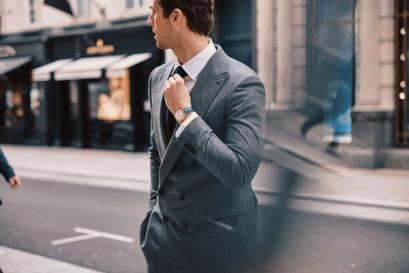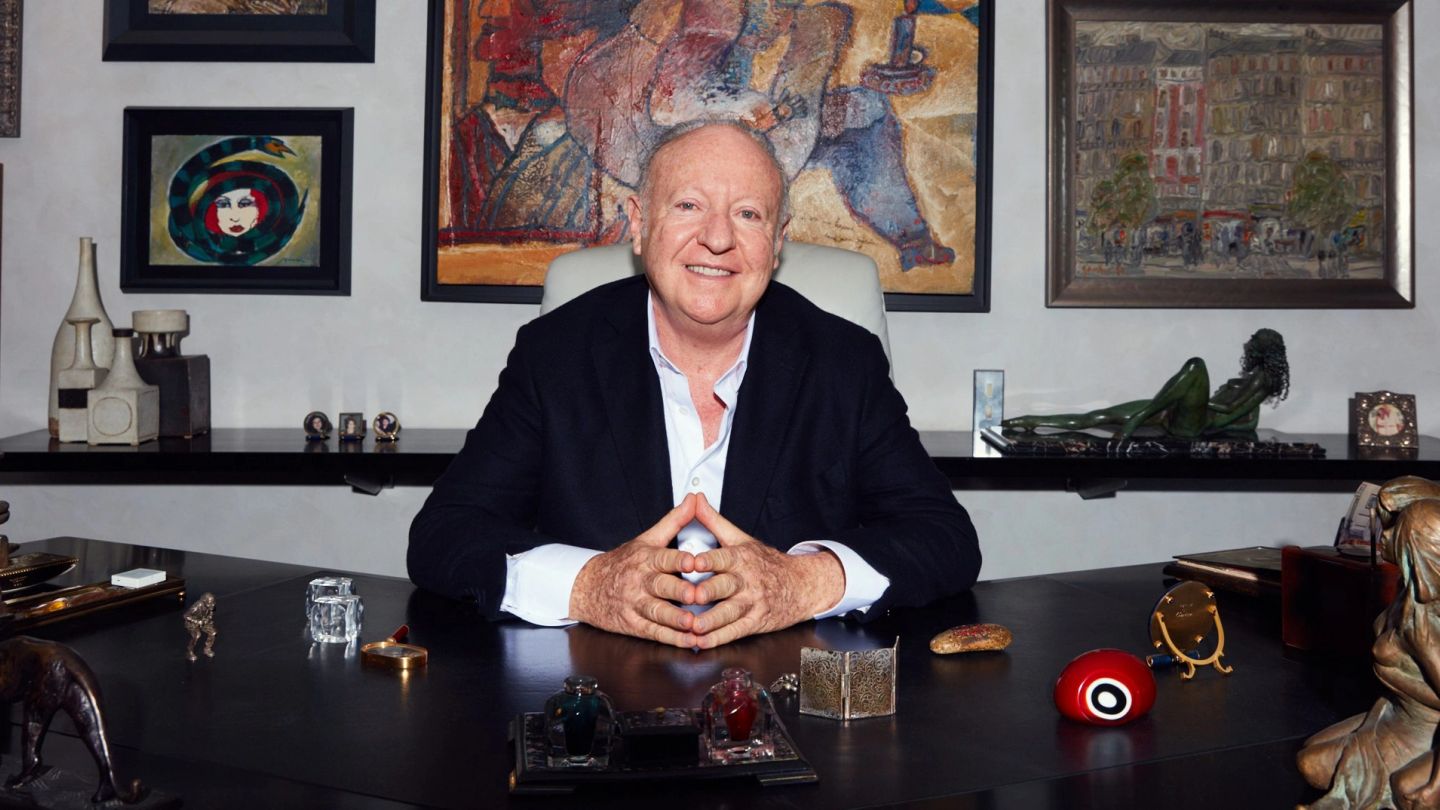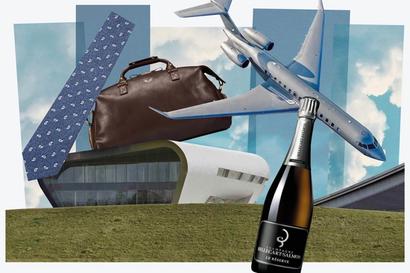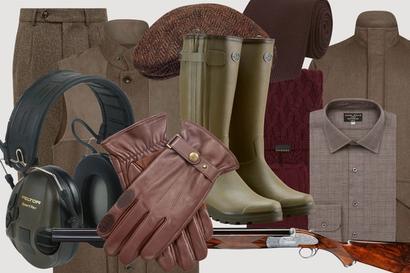

It was José Eisenberg’s son, Edmond, who got in touch with Gentleman’s Journal out of the blue. He is a fan of the magazine and was keen for us to visit their office in Monaco, to hear the Eisenberg story; a story born from a deep-rooted, visceral love for beauty, art and elegance. Intrigue prevailed and we booked flights.
This proved to be a wise choice…
José cuts a mercurial figure as he rounds off a phone call and takes a seat at his desk, surrounded by paintings, sculptures and cases of Montblanc pens. ‘There is art in everything – it tells a story, captures a moment,’ he says, hands flicking around the room. ‘It’s in food, drink, technology, fashion, everything; as long as it’s done properly.’ I ask where this love for art originated. ‘It’s a very long story,’ he replies, smiling. ‘Do you have the time?’
The Eisenberg office in the Roccabella – home to the likes of Lewis Hamilton, Ringo Starr and Karl Lagerfeld – is like a museum; the work of assorted artists, including Salvador Dalí, fill the walls and line the corridors. They are treasured pieces José has bought or commissioned over the years, each carrying sentimental value. But he is not a collector. ‘A real art collector is someone who doesn’t collect – it is bad terminology; collecting is greedy. Someone who loves art lives with their paintings; appreciates them every day.’
Behind him hangs a Théo Tobiasse, a daily reminder of an outing with his then 15-year-old daughter Elodie; in another room, three small oil paintings by a relatively unknown Romanian artist. These were the first pieces of art he purchased, a nod to his heritage and the struggles his parents faced when Romania, the country of his birth, was in the chokehold of communism. They lost everything: their home; their textile company; and later, when José’s uncle paid to have them released from the country, their nationality.
There is art in everything – it tells a story, captures a moment. It’s in food, drink, technology, fashion, everything; as long as it’s done properly...
‘I was 13 years old when I arrived in Florence,’ he starts. ‘I had no money, nothing, so I got a job working in small workshops, like in the time of the Renaissance. This was a very important time in my life. I was sent out to buy newspapers and cigarettes, but at the same time I was allowed to look and touch. I developed a relationship with culture, sculpture and paintings.’ Since then, art and beauty have played a part in everything he has done.
‘When I was 22 I had big dreams. I had an opportunity in fashion, and I started to design for some of the big names in Florence.’ His timing was ill-fated. That same year was the year of the student revolution in France and Italy, slowing the country’s industrialism in a time when José wanted to speed it up.
‘I searched for a place that wasn’t affected by the rebellion. I found it 750km south of Florence, in Basilicata, where the people were so poor that they didn’t think about it. Even the mafia wasn’t interested – there was nothing to take.’ In the space of four years, from 1968-1972, José elevated a team of five women to a trade that employed over 75,000 people, designing and producing garments for names such as Gucci, M&S and Dior. He garnered massive respect in the industry as a creative and was made a Citizen of Honor at the age of 26 for his contribution in industrialising the Basilicata region.
Artistic ambition fuelled his next step: a ‘mad and naïve’ dive into technology. ‘There wasn’t enough tech in fashion, so in 1974 I went to Boston. My dream was to make something in artificial intelligence, a machine that could recognise objects like the human eye.’ But his concepts were too advanced for the machines of the time; they simply couldn’t keep up. Frustrated, he turned his attention to the sluggish computers themselves, going head to head with the likes of Steve Jobs.
With his next company, Eisenberg Data Systems, he designed the first personal computer and removable keyboard, but was eventually squeezed out by larger companies like IBM, which had far deeper pockets. So in 1985 he stepped away to conceive his modus operandi, Eisenberg Paris. ‘I had always wanted a beauty brand; a culmination of everything I had learned up till then. Art, fashion, high technology, and a desire for progress.’ Once again, he set out to re-write the script.
‘At the time, skin-care companies were using animal cells to make products. I thought this was crazy, and that the answer must come from nature. We entered into something that was never done, pure bio-technology – it opened up a new era. After 13 years we discovered a combination of molecules that I baptised the Trio Molecular Formula – it is the basis of all our products today.’
Aged 71, José is still as involved in creating products as he was 30 years ago, and despite numerous offers, he has no intention to sell his brand to multi-nationals. ‘For me, money means nothing,’ he says candidly. ‘I haven’t been impressed by money since 1970 – it kills creativity. And I live to create. I want to find art and beauty in everything we do.’
A truly inspiring individual. Thank you, Edmond, for the invitation.


